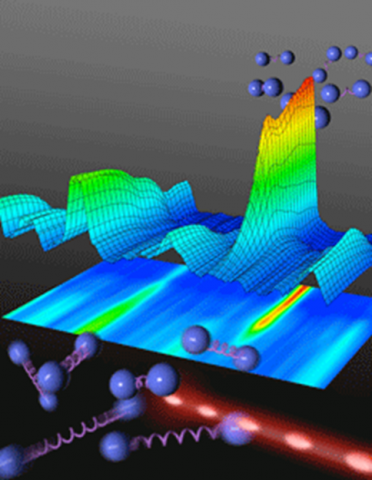DYMCOM
Please click here to see the list of confirmed participants
If you would like to register for the program please go here.
Dynamical Methods for COld Molecular collisions, from laboratory to beyond the Earth.
Quantum regimes and near thresholds dynamics probed by theory and experiments
Workshop : Nov 4 –Nov 29, 2019.
-
Please click here to see the : DYMCOM November 2019 Presentations
Scientific Organizing Committee :
Laurent Wiesenfeld (CNRS/U. Paris-Saclay, FR, chair)
Annemieke Petrignani (FELIX, U. Nijmegen, NL)
Maxence Lepers, Maxence (CNRS/U. Dijon, FR)
Ioan Schneider (U. Le Havre, FR)
Maria-Luisa Senent, (CSIC, Madrid, ES)
Yuri Suleymanov (Cyprus Institute, CY)
Andreas Wolf (Max Planck Inst, Heidelberg für Kernphysik, DE)

courtesy of P. Pillet et al. (Lab. Aimé-Cotton)
Rationale DYMCOM scientific program
At low temperatures (with low to be defined precisely below), molecular collisions display several characteristics that make it markedly different from usual laboratory chemistry. While the physical principles underlying general reaction theories evidently hold, peculiarities arise, because of the acute role of purely quantum phenomena, of symmetries, of dilution.
This workshop aims at clarifying the present situation and at finding new path for progress, by putting together specialists of various fields, from mathematical and computational physics, molecular physics and physical chemistry, theoretical and experimental. We shall pinpoint at the many difficulties that prevent rapid progress, and describe the experimental and observational challenges. Even more importantly, the workshop will bring together the various modern specialities which are in need of theory and experiment: very cold chemistry, in the field of the molecular Bose-Einstein condensates, ion and neutral molecular trap reactions, astrochemistry in cold environments, and possibly, low temperature chemistry of plasmas and chemistry of the Solar System small bodies.
Several characteristic are shared by those systems, which make them quite different from usual liquid state laboratory chemistry, and in need of detailed investigation:
- The molecules are either in a pure diluted gaseous state or diluted in a buffer gas. Trapped molecules or ions are extreme cases of dilution. Three-body effects are always negligible
- The temperature is low
- Internal degrees of freedom are either constrained to the ground state, or else to few excited levels;
- De Broglie wavelengths of the colliding partners are either of the order of the size of the molecules (strong quantum effects, including for example tunnelling) or of the size of the intermolecular distances (strong collective quantum effects);
- Zero-Point Energies are often nowhere negligible, and may even be more important than potential energy, like for some hydrides cations or for Hn+ chemistry.
- Thermodynamical equilibrium is not the driving force, but rather kinetics of the various channels; similarly, branching ratios are usually determined by kinetics, not thermodynamics.
- Symmetries play an important role, including identical particle symmetries and spin symmetries.
- Weak long-distance forces may drive the whole scattering, especially so for inelastic scattering.
- Non Born-Oppenheimer effects have to be dealt with, especially so for many reactions involving small neutral or charged radicals, in interaction with electrons. Conical interactions (and higher order singularities) of Potential Energy Surfaces may drive the whole reaction.
All these features make the study of low temperature chemistry both more difficult and more rewarding.
More difficult, because of the intimate interplay between quantum and classical aspects, the need to deal with very large numerical problems. Also experimentally, reaching low temperatures (about 5 - 1 K for light atoms/molecules, down to the 1mK-0.1mK range in order to reach quantum collective effects for heavy molecules) is no small thing.
Two aspects make low temperature chemistry very rewarding. The low temperature diminishes the relevance of high gas densities and the relevance of molecules with heavier molecular weight (rule of thumb is less than 10 non hydrogenic atoms), mainly because of sticking on surfaces / low vapour pressures. For these light radicals/ions/closed-shell molecules, very detailed information may be gained, including detailed kinetics information. One may speak of state-to-state chemistry, of spin chemistry, of magnetic/electric field dominated chemistry. All these fields, while known for several decades, take now an actual experimental and observational importance, thanks to the advent of (i) sensitive observation of low-temperature chemistry in interstellar media (ii) relevance of ultra-low T chemistry for Bose-Einstein condensate (iii) coming of age of chemistry with beams/jets (iv) maturing of the traps, of various kinds (v) powerful analysing techniques, including high-resolution mass spectrometry and laser spectroscopy.
